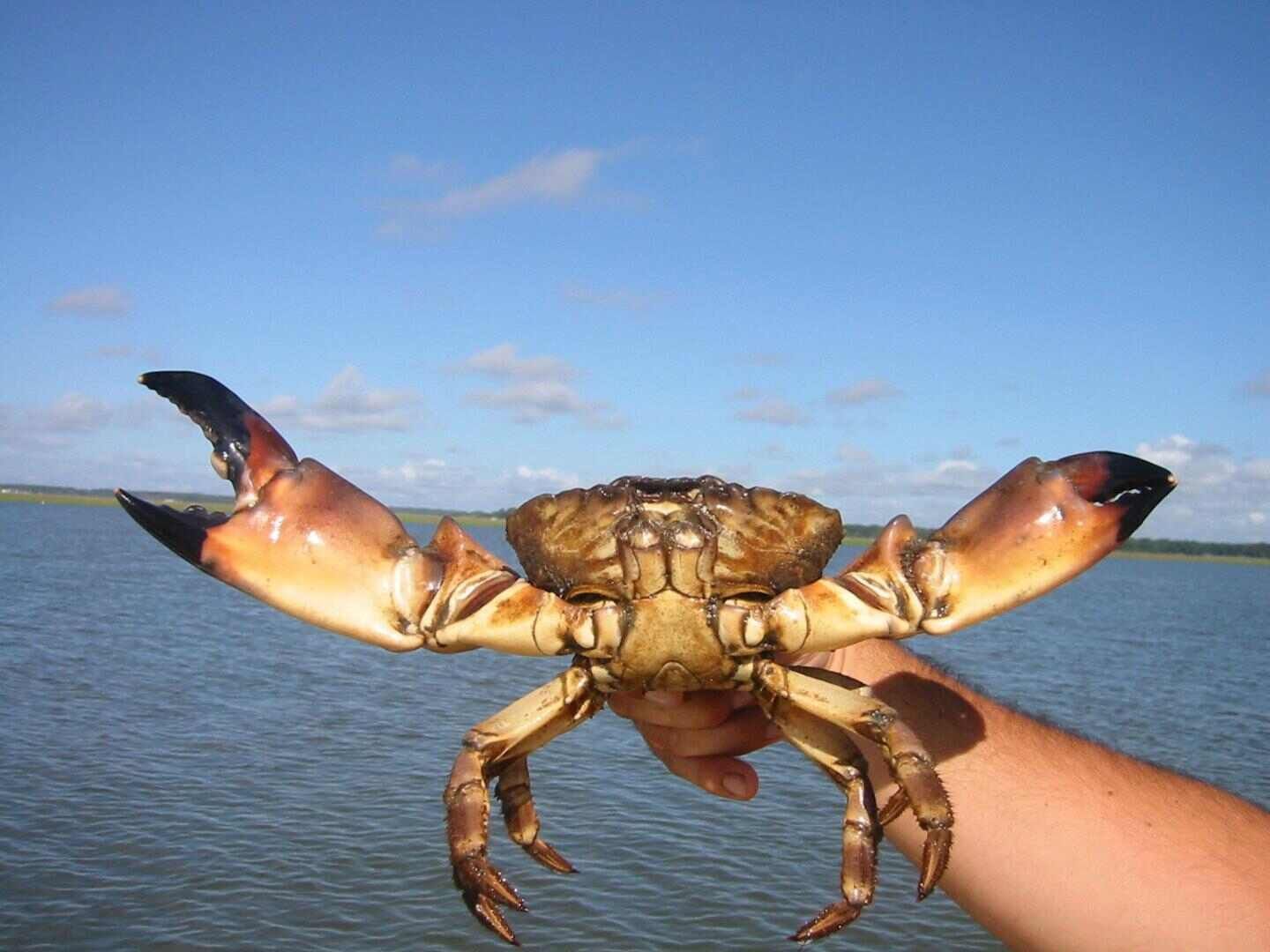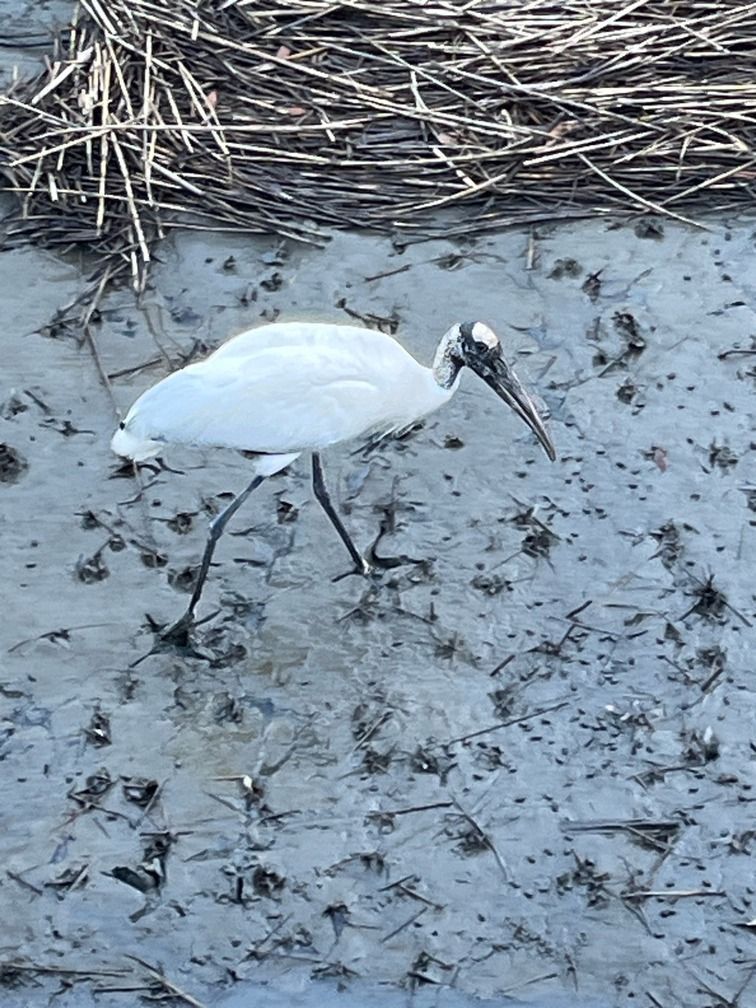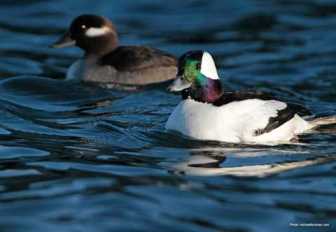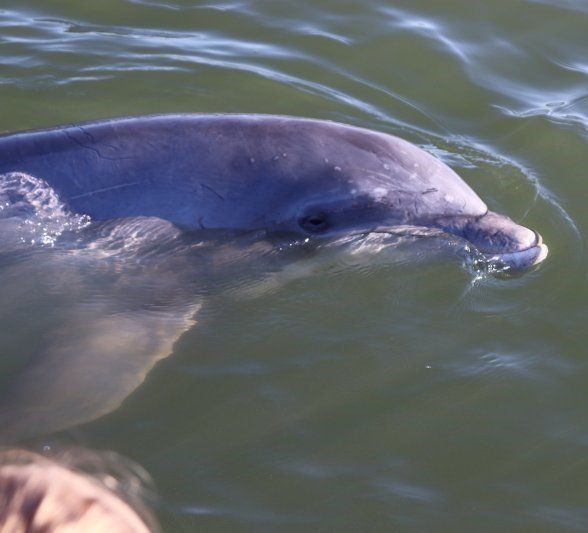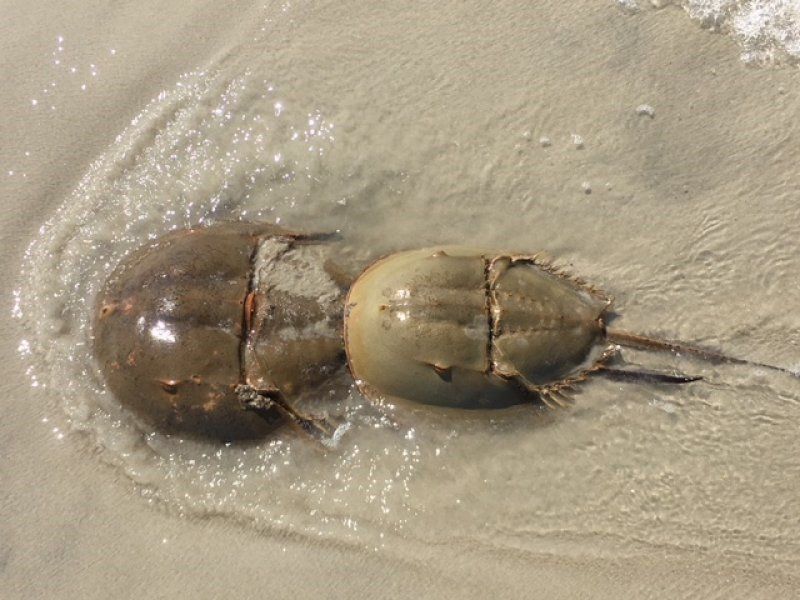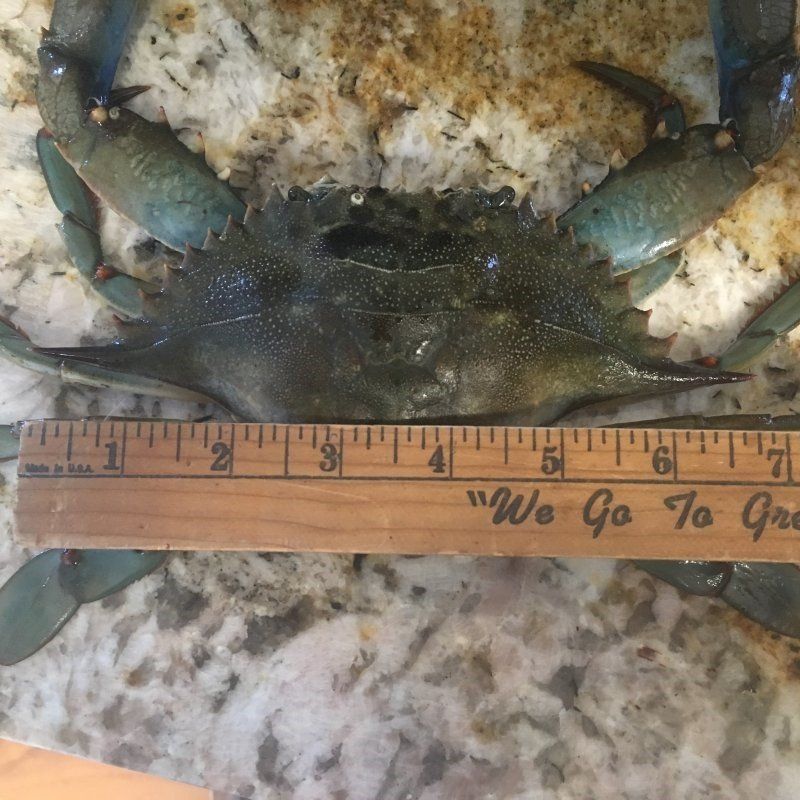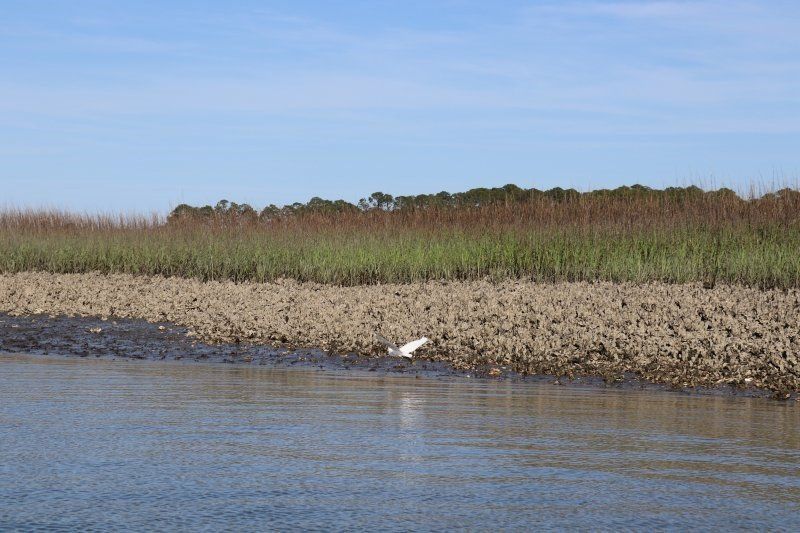The Great Egret of Hilton Head
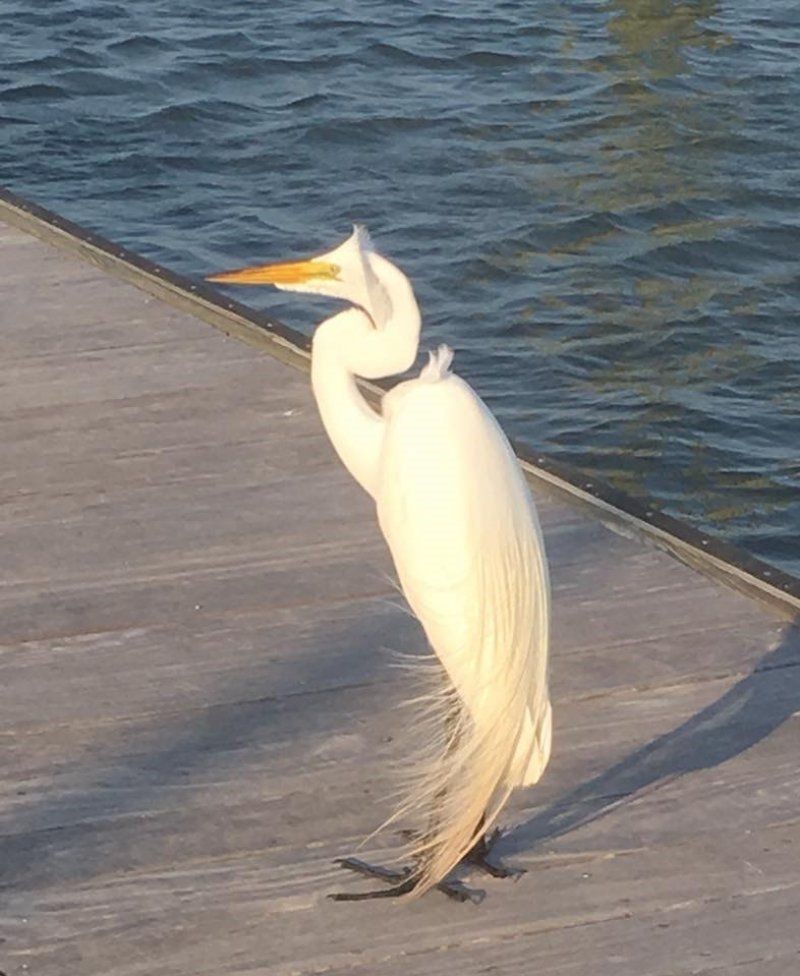
The Great Egret is one of the many beautiful birds you may encounter on our Dolphin & Nature Tour. The Great Egret is a white bird with black legs and a yellow bill. They are considered a bird of prey and can be up to 39 inches tall. The Great Egret gracefully walks along the shallows and marshes searching for food. They feed on small fish, aquatic insects, small amphibians, small reptiles and small mammals. When they see a fish or food of choice, they quickly strike with their pointed beak. The Great Egret swallows their food whole. The entire meal happens so quickly that unless you are directly watching them it is easy to miss. They are not above stealing fish from other birds. Don’t let the gracefulness fool you, they can show aggressive behavior towards other birds when needed.
In addition to this birds beauty and grace, they have gorgeous plumes that appear during breeding season. Breeding season is usually in the spring, March thru May. The male builds the nest, usually around other shorebirds. The female can lay 1-6 eggs in a nest made of sticks, twigs and reeds. The eggs are light blue in color and both parents alternate siting on the nest. The relationship between parents is monogamous during each breeding season. The incubation period is around 20-29 days and the fledging period, (where parents feed their young) could be up to 50 days. When the babies are born, they can be very aggressive toward their siblings. It is a situation of true survival of the fittest. They have 1 brood per year.
In the 1800s and early 1900s the Great Egret was at risk of becoming extinct because people would hunt them for their beautiful plumes. They are now a legally protected species and their numbers have greatly increased. They are no longer at risk for extinction. I would love to see any pictures you have captured of these beautiful birds. They are a very fascinating species to see. We are so blessed that Hilton Head Island is home to these beautiful birds and so much other wildlife. Come out on our Dolphin and Nature Tour to see Great Egrets and other local wildlife.
*facts verified by reputable sources


